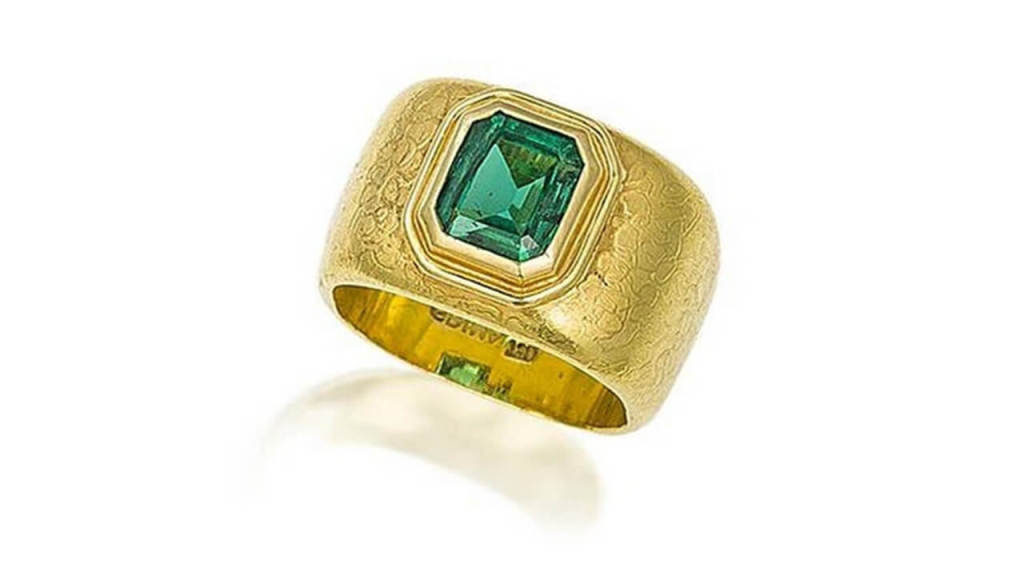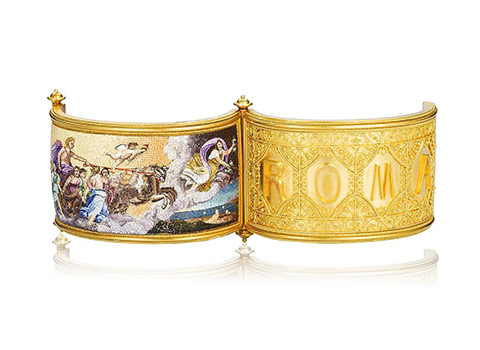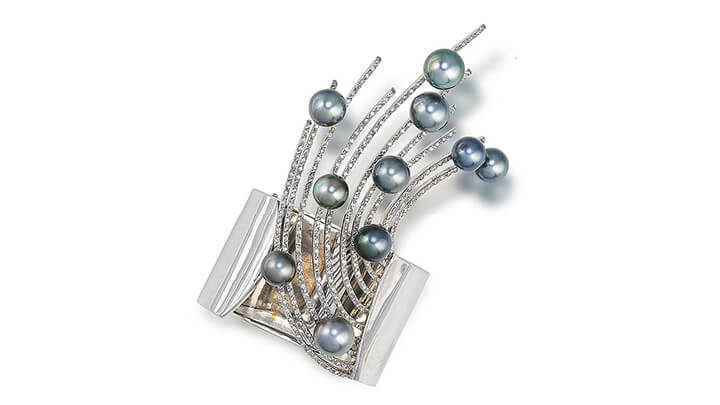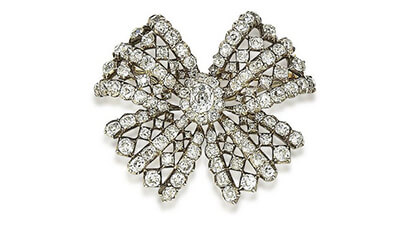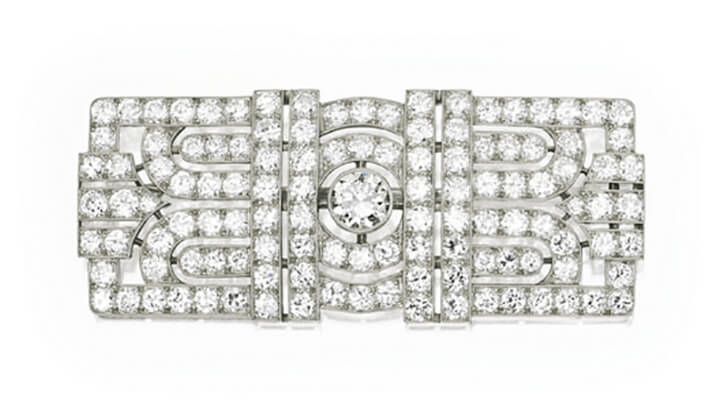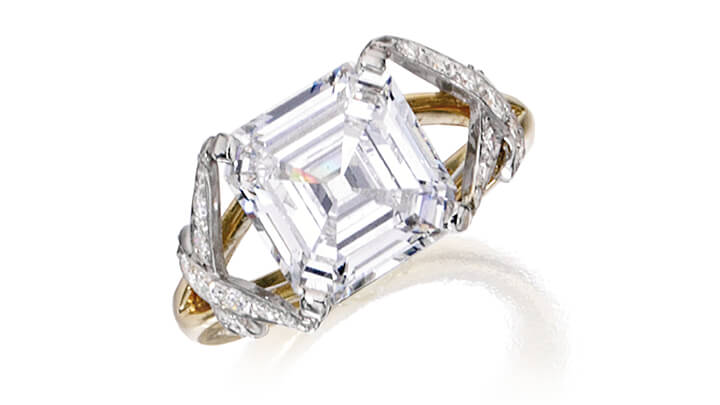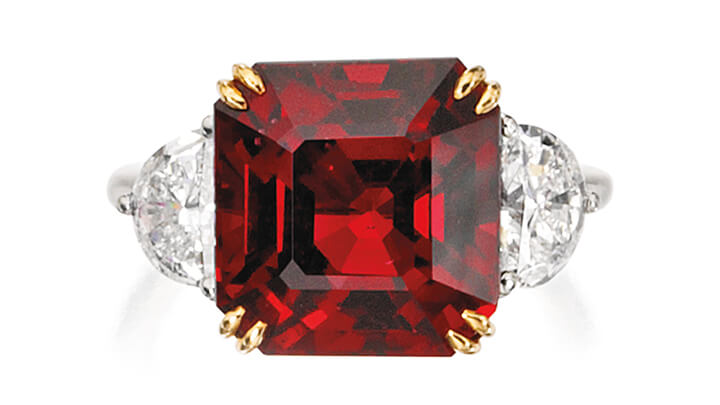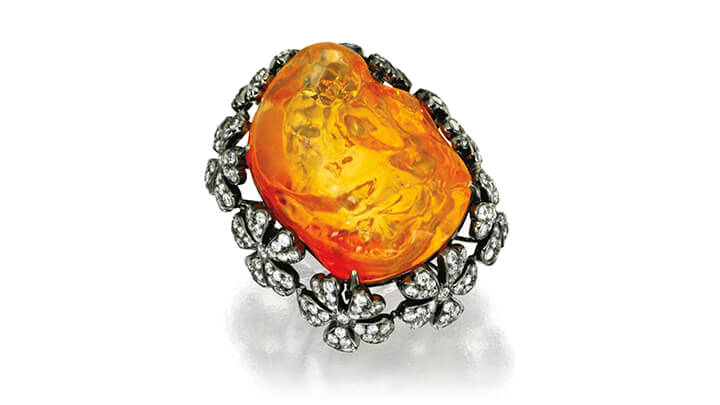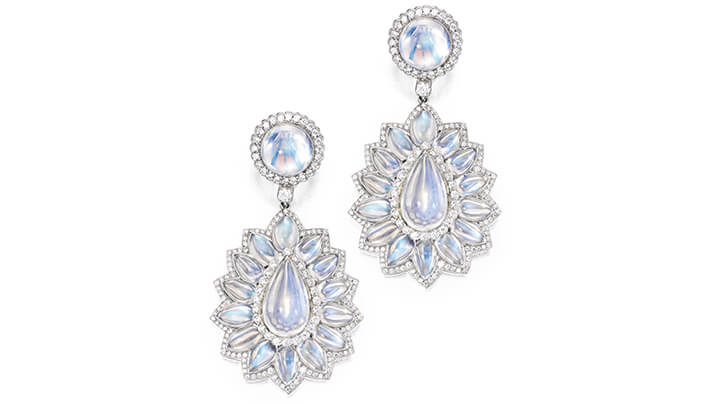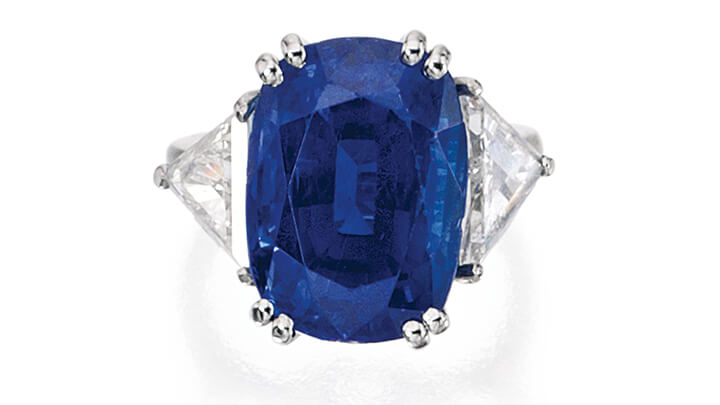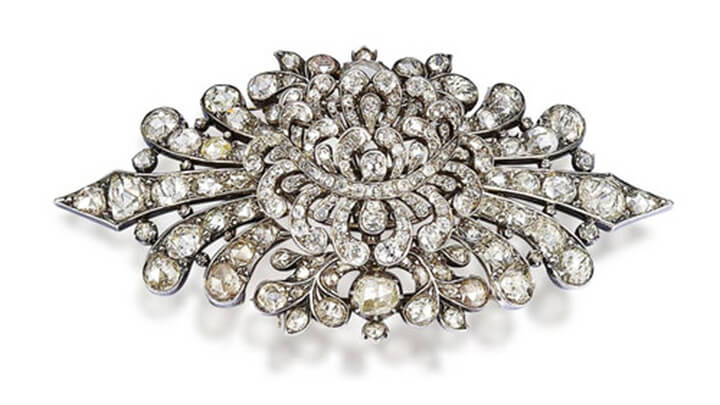Bonhams, London, 09-19-2012: An Art Deco Diamond and Ruby Bracelet, circa 1935
Estimate:
£ 4,000 – 6,000
US$ 6,300 – 9,500
Designed as a series of articulated geometric plaques, with pierced and openwork detail, set throughout with brilliant and single-cut diamonds and calibré-cut rubies, diamonds approximately 4.45 carats total, one ruby deficient, length 16.4 cm. This is a very nicely designed of the period Art Deco bracelet.
Endless variations of Art Deco bracelets were designed and were extremely popular in their time and still are with collectors today. Often designed with contrasting colors as in this bracelet with ruby accents gracefully interspersed with diamonds, diamonds being the most popular gemstone of this style period. Lapidaries of this time were producing a wide assortment of geometric gem cuts including baguettes, emerald-cuts, triangles and shields. Earlier Art Deco bracelets featured more color while later were often completely white…this example falls somewhere in between.
Art Deco jewelry holds its value well and continues to appreciate. Especially when it is well made with good design. This is reasonably priced because they maker’s name is not known but that does not effect its elegance.


